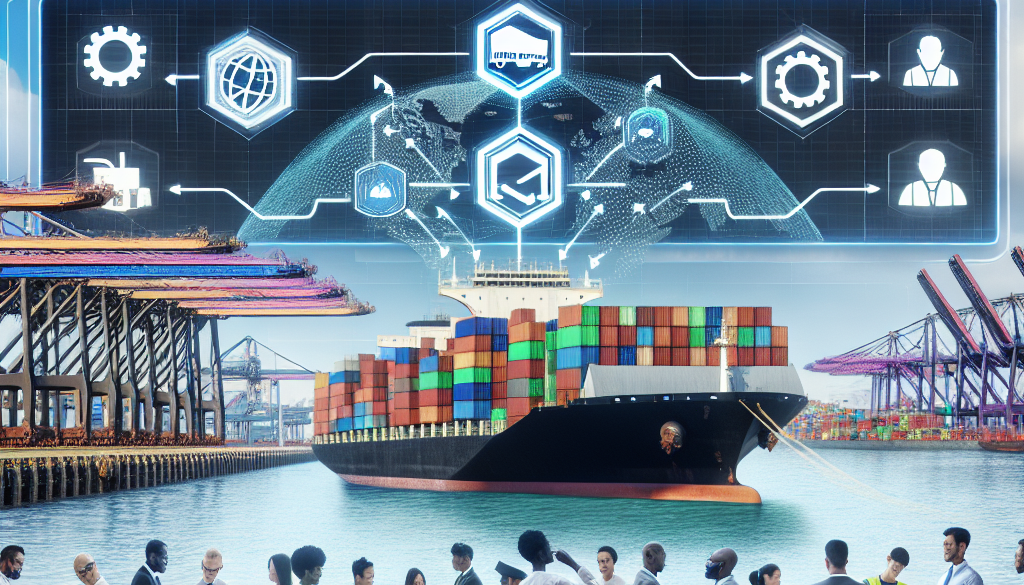Optimizing Supply Chain Resilience
-
Table of Contents
- Optimizing Supply Chain Resilience for Business Continuity
- Understanding Supply Chain Resilience
- Key Strategies for Enhancing Supply Chain Resilience
- Implementing a Resilient Supply Chain Framework
- Visibility and Transparency
- Flexibility and Responsiveness
- Collaboration and Communication
- Continuous Improvement
- Case Studies and Statistics
- Challenges in Building Supply Chain Resilience
- Conclusion: The Imperative of Supply Chain Resilience
- Optimize Your Nutrition Supply with ETprotein’s High-Quality Protein Products
Optimizing Supply Chain Resilience for Business Continuity

In an increasingly interconnected and volatile global market, the resilience of supply chains has become a critical aspect of business strategy. Companies are facing a multitude of challenges, from natural disasters to trade disputes, pandemics, and cyber-attacks, all of which can disrupt the flow of goods and services. Optimizing supply chain resilience is not just about avoiding disruptions but also about responding and recovering swiftly when they occur. This article delves into strategies and best practices for enhancing supply chain resilience, ensuring that businesses can withstand and quickly bounce back from unforeseen events.
Understanding Supply Chain Resilience
Supply chain resilience refers to the ability of a supply chain to anticipate, prepare for, adapt to, and recover from disruptions. It’s about having the agility to respond to short-term shocks and the adaptability to evolve alongside long-term changes in the global market. A resilient supply chain can help a company maintain operations, protect market share, and safeguard its reputation.
Key Strategies for Enhancing Supply Chain Resilience
- Diversification of Suppliers: Relying on a single supplier or region for critical components can be risky. Diversifying suppliers across different geographies can mitigate the risk of disruption due to regional events.
- Investment in Technology: Advanced technologies like AI, IoT, and blockchain can improve visibility across the supply chain, enabling companies to predict and respond to potential disruptions more effectively.
- Flexible Inventory Management: Adopting just-in-case inventory strategies, rather than just-in-time, can ensure that buffer stocks are available to manage demand spikes or supply shortages.
- Collaborative Relationships: Building strong relationships with suppliers and logistics providers can lead to better communication and collaboration, which is crucial during a crisis.
- Risk Assessment and Planning: Regularly assessing risks and developing contingency plans can prepare businesses to act quickly when disruptions occur.
Implementing a Resilient Supply Chain Framework
Creating a resilient supply chain requires a structured approach that encompasses various aspects of the supply chain. Here’s how businesses can implement a resilient supply chain framework:
Visibility and Transparency
Having end-to-end visibility is essential for identifying potential risks and bottlenecks. This transparency allows businesses to monitor their supply chain in real-time and make informed decisions.
Flexibility and Responsiveness
Supply chains must be flexible enough to adapt to changing circumstances. This could involve adjusting production schedules, rerouting shipments, or switching to alternative suppliers.
Collaboration and Communication
Effective communication with stakeholders, including suppliers, customers, and logistics providers, ensures that everyone is aligned and can work together in the event of a disruption.
Continuous Improvement
Supply chain resilience is not a one-time project but an ongoing process. Regularly reviewing and improving supply chain processes can help businesses stay ahead of potential risks.
Case Studies and Statistics
Several companies have successfully navigated supply chain disruptions by prioritizing resilience. For instance, during the 2011 earthquake and tsunami in Japan, companies with diversified supply chains were able to recover more quickly than those with concentrated supply sources. According to a survey by the Business Continuity Institute, 73% of businesses experienced at least one supply chain disruption in 2020, with those having resilient practices in place recovering twice as fast as their counterparts.
Challenges in Building Supply Chain Resilience
While the benefits of a resilient supply chain are clear, there are challenges that businesses must overcome:
- Cost implications of maintaining additional inventory or multiple suppliers.
- Complexity of coordinating and integrating across a diverse network of suppliers and partners.
- Resistance to change within organizations accustomed to just-in-time practices.
Conclusion: The Imperative of Supply Chain Resilience
In conclusion, optimizing supply chain resilience is essential for businesses to thrive in today’s unpredictable environment. By diversifying suppliers, investing in technology, managing inventory flexibly, fostering collaboration, and continuously assessing risks, companies can build robust supply chains that not only withstand disruptions but also provide a competitive advantage. The key takeaways for businesses are to prioritize visibility, flexibility, collaboration, and continuous improvement in their supply chain strategies.
Optimize Your Nutrition Supply with ETprotein’s High-Quality Protein Products
For businesses in the food and beverage industry, ensuring a resilient supply chain also means partnering with reliable suppliers of raw materials. ETprotein offers a range of high-quality protein products that can help businesses maintain a steady supply of essential ingredients. Their diverse product portfolio, including organic rice protein, pea protein, and various seed proteins, ensures that businesses can find the right ingredients to meet their needs. With ETprotein’s commitment to non-GMO, allergen-free products with high purity levels, businesses can trust in the quality and consistency of their offerings.
About ETprotein:
ETprotein, a reputable protein and L-(+)-Ergothioneine (EGT) Chinese factory manufacturer and supplier, is renowned for producing, stocking, exporting, and delivering the highest quality organic bulk vegan proteins and L-(+)-Ergothioneine. They include Organic rice protein, clear rice protein, pea protein, clear pea protein, watermelon seed protein, pumpkin seed protein, sunflower seed protein, mung bean protein, peanut protein, and L-(+)-Ergothioneine EGT Pharmaceutical grade, L-(+)-Ergothioneine EGT food grade, L-(+)-Ergothioneine EGT cosmetic grade, L-(+)-Ergothioneine EGT reference grade and L-(+)-Ergothioneine EGT standard. Their offerings, characterized by a neutral taste, non-GMO, allergen-free attributes, with L-(+)-Ergothioneine purity over 98%, 99%, cater to a diverse range of industries. They serve nutraceutical, pharmaceutical, cosmeceutical, veterinary, as well as food and beverage finished product distributors, traders, and manufacturers across Europe, USA, Canada, Australia, Thailand, Japan, Korea, Brazil, and Chile, among others.
ETprotein specialization includes exporting and delivering tailor-made protein powder and finished nutritional supplements. Their extensive product range covers sectors like Food and Beverage, Sports Nutrition, Weight Management, Dietary Supplements, Health and Wellness Products, and Infant Formula, ensuring comprehensive solutions to meet all your protein needs.
As a trusted company by leading global food and beverage brands and Fortune 500 companies, ETprotein reinforces China’s reputation in the global arena. For more information or to sample their products, please contact them and email sales(at)ETprotein.com today.












